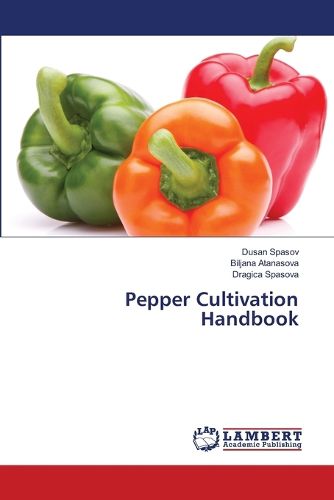Readings Newsletter
Become a Readings Member to make your shopping experience even easier.
Sign in or sign up for free!
You’re not far away from qualifying for FREE standard shipping within Australia
You’ve qualified for FREE standard shipping within Australia
The cart is loading…






Pepper (Capsicum annum L.) belongs to the group of the most important vegetable crops. Pepper fruits are characterized by high nutritional and taste values, which is due to the relatively large content and harmonious ratio of sugars, acids, vitamins and mineral substances. The content of vitamin C in the fresh fruit of the pepper is 3-4 times higher than that of the lemon (up to 400 mg/100g). Proteins are represented by 1.4%, nitrogen-free substances by 5.44%, cellulose by 1.8% and mineral substances by 0.69%. The pepper can be used in different ways, such as fresh, pickled, baked, frozen, as an addition to various dishes, and in the industry, as raw material for various types of processing. In the last few years, the need to favor the pepper production with higher standards in terms of food safety has become necessary. For the competitiveness of our products in the markets that we traditionally have, but also for the conquest of new markets in the European Union, it is necessary to introduce standards for safety food production.
$9.00 standard shipping within Australia
FREE standard shipping within Australia for orders over $100.00
Express & International shipping calculated at checkout
Pepper (Capsicum annum L.) belongs to the group of the most important vegetable crops. Pepper fruits are characterized by high nutritional and taste values, which is due to the relatively large content and harmonious ratio of sugars, acids, vitamins and mineral substances. The content of vitamin C in the fresh fruit of the pepper is 3-4 times higher than that of the lemon (up to 400 mg/100g). Proteins are represented by 1.4%, nitrogen-free substances by 5.44%, cellulose by 1.8% and mineral substances by 0.69%. The pepper can be used in different ways, such as fresh, pickled, baked, frozen, as an addition to various dishes, and in the industry, as raw material for various types of processing. In the last few years, the need to favor the pepper production with higher standards in terms of food safety has become necessary. For the competitiveness of our products in the markets that we traditionally have, but also for the conquest of new markets in the European Union, it is necessary to introduce standards for safety food production.